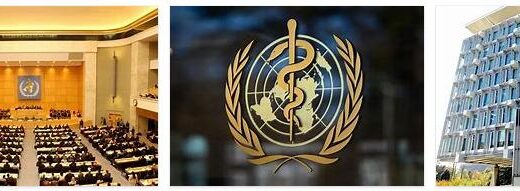Andorra 2018
In 2018, Andorra was a small, wealthy principality located between Spain and France in the eastern Pyrenees mountains. It had a population of approximately 77,000 people, and its economy was largely based on tourism and banking services. The official language is Catalan, although French and Spanish are also widely spoken. Since 1993, Andorra has been a member of the United Nations and other international organizations such as the Council of Europe. According to extrareference, Andorra is a parliamentary democracy with two co-princes (the president of France and the bishop of Urgell). Its legislature is known as the General Council which consists of 28 members elected by universal suffrage for four-year terms. In terms of foreign relations, Andorra has diplomatic ties with over 100 countries around the world. The government also maintains friendly relations with its neighbors Spain and France as well as other European countries.
Yearbook 2018
Andorra. According to Countryaah.com, Andorra is the capital city of Andorra, a country located in Southern Europe. Andorra is in fourth place in The Lancet’s list of the world’s healthiest countries. The study looked at and compared factors such as poverty, access to clean water, education, equality and industrial innovation. However, Andorra, Malta and San Marino are the only European countries where abortion is totally prohibited.
- According to Abbreviationfinder: AND is an three letter acronym for Andorra.
Andorra’s foreign minister attended a meeting in Canada in September, where 16 female foreign ministers gathered to discuss “women’s perspectives” in foreign policy.
Andorra
Andorra is a Western European state, in the Pyrenean region, between Spain and France. The population has registered a notable increase in the last twenty years of the 20th century. (38,000 residents in 1981; 65,971 at the 1999 census), following the growing economic well-being derived from the development of tourism. The territory, formed by the source region of the Valira river, which flows into the Segre (affl. Ebro), is entirely mountainous, with a harsh morphology. The Pyrenean chain reaches almost 3000 m several times (Pic de Serrère, 2911 m; Coma Pedrosa, 2946 m; Tossa Plana, 2907 m). Harsh climate with long and cold winters, short summers, heavy rains and snowfalls. More than half of the territory is covered by permanent meadows and pastures (with summer transhumance of sheep and cattle). The tertiary sector absorbs more than 80% of the active population: the main economic resource is constituted by tourism (approximately 2,791,000 tourist entries in 2004); the establishment of numerous financial companies is significant, attracted by legislation that makes Andorra a ‘tax haven’. Agriculture has secondary importance (tobacco cultivation). The population is largely made up of immigrants (mainly Spaniards, but also Portuguese and French), while the Andorranians are just over a third of the total. Official language is Catalan. The main centers, in addition to the capital, are: Les Escaldes, Ordino, El Serrat, Soldeu, the highest center (1826 m), and Encamp.
The territory of Andorra in the 9th century. it was under the authority of the Spanish bishop of Urgel (Catalonia). Later the area was also claimed by French feudal lords, becoming the subject of a dispute that found a first agreement in 1278, when a form of Franco-Spanish double sovereignty was established. In 1607 the powers of the counts of Foix, co-owners of the principality, were acquired by the French crown; in 1806 Napoleon transformed Andorra into a Republic. In 1993 the new democratic constitution attributed a purely honorific meaning to the traditional co-principality, exercised by the French head of state and the bishop of Urgel.
With the 2009 elections, the center-right coalition lost for the first time since 1994. However, the center-left government did not obtain parliamentary approval on the proposal to introduce a VAT in the country at 4.5 %, one of the points of a tax reform plan aimed at improving state finances and initiating greater integration into the European economy: the opposition has in fact blocked the proposal claiming the opportunity for more gradual reforms and, with the elections anticipated April 2011, the center-right partyof the Andorran Democrats won 20 seats out of 28 in parliament, also obtaining an absolute majority in the consultations held in 2015, in which they obtained 15 seats, while in 2019, despite establishing themselves with 35% of the votes, they lost the absolute majority.



